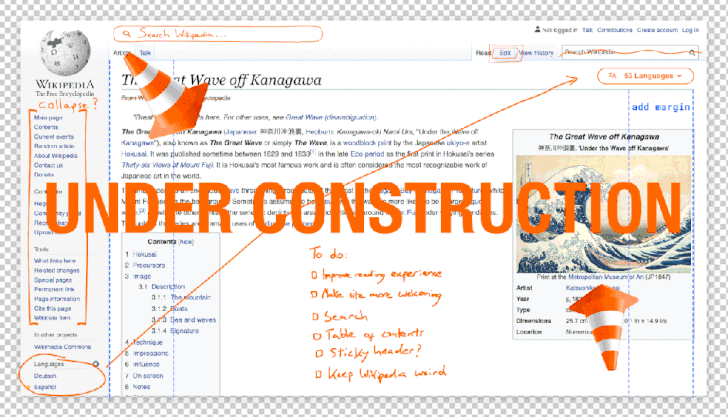Wikipedia is one of the cornerstones of the internet, a place that we've probably all visited to learn about new topics or find statistics to win a forum debate. While the mobile app has seen design improvements over the years, the desktop site has remained virtually unchanged since 2010 — that's the same year the Nexus One debuted. After almost a decade, Wikipedia is finally ready for a refresh.
Work on the new design has been underway since May of last year. Making the desktop interface easier to navigate, bringing content to the forefront, and creating a more inviting experience for all users, both new and old, are the end goals for the project. One of the first changes users will see is a reconfigured horizontal logo that takes up less vertical space (yet somehow pushes page content further down).
The reconfigured logo takes up less space.
Also on the list of additions is a collapsible sidebar, a maximum line width for easier reading, a more accessible table of contents, and improvements to search. Giving users the option to hide the sidebar and let the content itself take up more space is sure to be useful, as is the table of contents, which will be stickied to the top of the screen for easy access. The redesigned search box will display thumbnails as you type for better glanceability.
Real-time result thumbnails help modernize the search experience.
It's worth noting that you won't see these changes rolled out all at once. Instead, the plan is to gradually implement the updates over the next year or so. Since MediaWiki, the platform Wikipedia is built on, is an open-source community project, the full list of updates under consideration is subject to change as user feedback is collected. Ultimately, the team hopes to have the refresh completely implemented by the end of 2021, just in time for Wikipedia's 20th birthday celebration.
Source: Wikimedia

